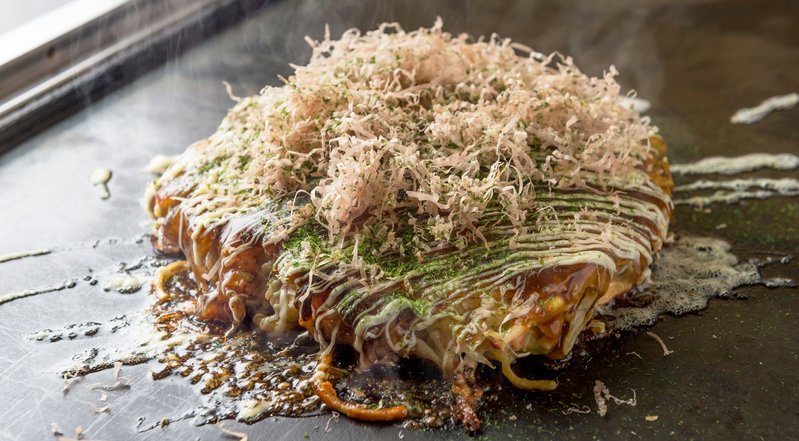
(Photo from: ©OSAKA CONVENTION & TOURISM BUREAU)
The comfort of an okonomiyaki is a culinary experience that travellers to Japan adore. Aside from the satisfaction that comes with making the perfect okonomiyaki, the social aspect of cooking the okonomiyaki with friends and family makes the experience a treasured one.
The name of the dish is made up of the word ‘okonomi’, which means ‘to one’s liking’ in Japaneseー should you cook the dish at home, you can add any ingredient to okonomiyaki and it would still end up tasting delicious!
The history of okonomiyaki
Okonomiyaki’s history stemmed from funoyaki, a sweet pancake first consumed in the 16th century and was renamed mojiyaki after it spread beyond Buddhist monasteries. A savoury version of this dish was eaten regularly after the Great Kanto Earthquake in 1932, and Western ingredients such as Worcestershire sauce were added to it. After World War II, rice grain became unaffordable, resulting in okonomiyaki becoming more and more common due to the ease of using any ingredients mixed into the batter — the okonomiyaki that we know and love today is a result of iron teppan dishes adopted throughout Japan, resulting in its nationwide ubiquity.
Ways to eat okonomiyaki
Okonomiyaki is widely popular all over Japan but is famous in the cities of Osaka and Hiroshima, hence the two main variations of okonomiyaki in Japan: Osaka-style and Hiroshima-style.
1. Osaka-style okonomiyaki

(Photo from: ©OSAKA CONVENTION & TOURISM BUREAU)
Osaka-style okonomiyaki is not just found in Osaka but in most okonomiyaki restaurants in Japan. Some recommended options for Osaka-style okonomiyaki include Mizuno near Osaka’s Dotombori Arcade which includes vegan and vegetarian options of their signature okonomiyaki; Okonomiyaki Sanpei, which started negi-yaki, or okonomiyaki garnished with plenty of spring onions, and Kyo-chabana which created a unique tomato and avocado okonomiyaki.


